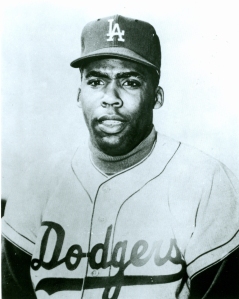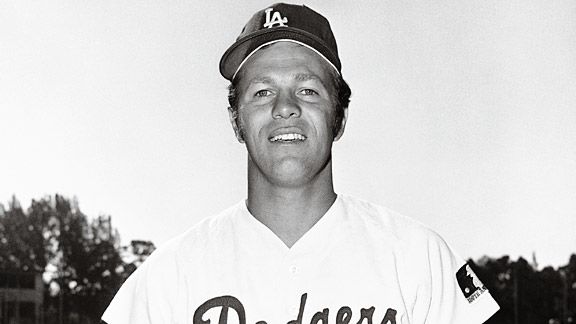By Jon Weisman
Periodically this year at Dodger Insider, we’ll flash back to 1965 to celebrate the 50th anniversary of that World Series title for the Dodgers. You all know how it ended, but do you remember how we got there?
Today, we’ll check in on how things were sounding from Dodgertown in Vero Beach. Opening Day 1965 on April 12 was still about two weeks away, so while the Dodgers were coming off an 80-82, sixth-place finish in 1964, Spring Training’s power of positive thinking was in full swing. This was particularly the case with the pitching staff, as evidenced by two pieces that ran in the Times’ editions on March 28, 1965.
Dodger catcher John Roseboro, entering his ninth season, told beat writer Frank Finch of the Times that the 1965 pitching staff was the best he’s handled.
“We have an overabundance of left-handers,” Roseboro said, implicitly acknowledging the offseason trade of Frank Howard for Claude Osteen, who joined Sandy Koufax and Johnny Podres in the four-man rotation, “but we have more depth now and won’t have to depend on two starters (Don Drysdale and Koufax) like we did most of last year.”
Drysdale threw 321 1/3 innings across 40 starts in 1964. Koufax averaged 7.9 innings per start with a 1.76 ERA, but his 1964 season after a 13-strikeout shutout August 16.
Assessing those top two pitchers in the midst of exhibition play, Roseboro was upbeat even if his glasses weren’t entirely rose-colored.
“Sandy’s just about ready to go nine strong innings. He’s throwing well, but his control is off a bit,” Roseboro said. “The last time I caught Don he looked ready for nine. Then he hit the ‘dead arm’ stage against the A’s. His control is good.”
Times columnist Sid Ziff reported even more positivity about the pitching, with a Dodger spokesman telling him it was “by far” the best it had ever been in Los Angeles. Of bigger concern was addressing 1964’s defensive shortcomings. The spokesman didn’t mince words.
“Our defense was horrible last year, but John Kennedy and Jim Lefebvre will help to correct that situation,” he said. “If Lefebvre doesn’t stay with the club, shame on us. There was a rumor he might be farmed out for another year of experience.”
Lefebvre made his Major League debut on Opening Day and went on to play 157 games and win the National League Rookie of the Year award. (Coincidentally, 50 years ago today, it was reported Lefebvre had escaped injury after being beaned in the helmet during an exhibition game against Detroit by former Dodger pitcher Larry Sherry.)
“We aren’t set in right field yet,” the spokesman continued, “but no matter who plays there, he’ll be a defensive improvement over Frank Howard. The way it looks now, Wes Parker has the best shot at it. He looks like a real hitter.”
Parker ended up settled at first base, with Ron Fairly taking the bulk of right-field action.
Also of concern was the clubhouse atmosphere and perceived undermining of manager Walter Alston. Leo Durocher, in particular, was famous for challenging Alston’s authority.
“Alston is finally on his own as a manager,” said the spokesman (who Ziff said wanted “to remain unidentified because it wouldn’t do for him to show so much confidence.”) “Now he doesn’t have to defer, subconsciously or otherwise, to any of his coaches. … The Bragans, Dressens and Durochers are all gone. There’ll be no other ‘managers’ in the dugout this season. We think it has taken a load off Alston’s shoulders. He has already assumed more authority.”
The idea that Alston, only one season removed from his third World Series title, was so under the gun shows you that it never really gets easy for a manager. But 1965 would indeed prove rewarding for Smokey.







